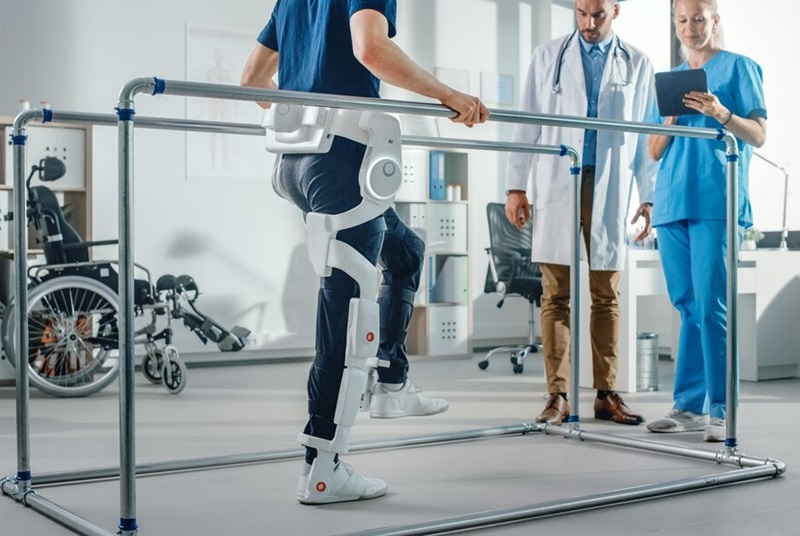Robot-assisted knee arthroplasty can be described as of great importance to orthopedic practice as it provides personalized options for increasing accuracy of surgery and, therefore, indicates better treatment outcomes for patients. Preliminary to this, a robotic surgical system integrates with artificial intelligence, or AI, to design a unique surgical procedure for each applicable patient.
Robotic knee replacement is a special operating procedure that even a layman needs to understand from time to time.
Understanding Robotic Knee Replacement
Robot-assisted knee arthroplasty, also known as robotic knee replacement surgery, involves the use of a specialized robotic system in the operation process. Traditional techniques depend on the surgeon’s dexterity and decision-making abilities in comparison with robotic systems that include real-time data and a three-dimensional view. It is also helpful to surgical performance in terms of fine cutting of bones and placement of implants, an area that is liable to entail mistakes if handled by the surgeons.
The Role of Robotics and AI
Precision and Customization
Any procedure performed with the help of a robotic system can be very accurate as compared to the conventional methods that are in practice at the present time. This particular robotic system obtains a high-fidelity 3D model of the knee joint of the intended patient from the pre-operative images to guide the intended surgery. This serves as a model as the robotic arm manipulates the surgical table during the surgery and guarantees the correct localization and positioning of the prosthesis.
Less Invasive Approaches
Most robotic knee replacement surgeries may be carried out with a minimum invasive procedure that involves making relatively small cuts to the affected area. This is reflected in decreased scarring, minimized blood loss, and enhanced patients’ recovery time as well. An analysis of the results of the interventions has indicated that patients who underwent robotic-assisted surgical procedures have less pain and also spend fewer days in the hospital.
Improved patient outcomes
Better Postoperative Patient Outcome
The use of technology, particularly robots, in the performance of the knee replacement surgery has also brought some extra level of patient satisfaction. It’s observed and reported by patients that with a better placement of the implant, joint stability and functionality improve after the operation. The idea is also beneficial in making patients stay comfortable and also helps in making all recoveries faster within shorter periods of time.
Potential Advantages
Long-term studies suggest that robotic knee replacement holds potential for better long-term results among the patients. More accurate implant positioning allows free movement and a longer service life of the prosthesis. Consequently, the potential future decrease in the number of patients who will require revision operation of total knee prosthesis, which has been an issue of particular concern for many patients who have undergone knee replacement surgeries,.
Robotic Knee Replacement Cost in Mumbai
Robotic knee replacement surgery in Mumbai typically costs between₹3.5 lakhs and₹15 lakhs. This range includes hospital charges, surgeon fees, and robotic technology fees. The average cost is around ₹4.25 lakhs, with premium hospitals possibly charging more due to the advanced facilities and expertise required for the procedure.
Conclusion
Robotic knee replacement surgery is one example of how, through advancement in technology, healthcare can be improved by increasing the number of treatment options that are regardless of the increased precision in surgery, improving the quality of surgery results. Through robotic surgery in combination with AI, surgeons can successfully deliver personalized solutions in response to specific anatomic conditions, thus excluding the harms linked to conventional invasive interventions. At Team Ortho Robotics, as this field evolves, patients with knee pain can expect enhanced quality of life through the application of new techniques in joint replacement.
FAQs
How do robots enhance the precision of knee replacement surgeries?
Robots utilize advanced imaging and mapping techniques to create a 3D model of the patient’s knee, guiding surgeons for precise bone cuts and optimal implant placement, significantly improving accuracy compared to traditional methods.
What are the benefits of personalized robotic knee replacement surgery?
Personalized robotic knee replacement surgery offers tailored surgical plans based on individual anatomy, leading to better alignment, reduced recovery time, less postoperative pain, and improved long-term outcomes for patients.










